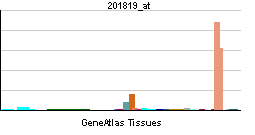Entrez 949 | Ensembl ENSG00000073060 | |
 | ||
Aliases SCARB1, CD36L1, CLA-1, CLA1, HDLQTL6, SR-BI, SRB1, scavenger receptor class B member 1 External IDs MGI: 893578 HomoloGene: 21132 GeneCards: SCARB1 | ||
Scavenger receptor class B member 1 (SRB1) also known as SR-BI is a protein that in humans is encoded by the SCARB1 gene. SR-BI functions as a receptor for high-density lipoprotein.
Contents
Function
Scavenger receptor class B, type I (SR-BI) is an integral membrane protein found in numerous cell types/tissues, including the liver and adrenal. It is best known for its role in facilitating the uptake of cholesteryl esters from high-density lipoproteins in the liver. This process drives the movement of cholesterol from peripheral tissues towards the liver, where cholesterol can either be secreted via the bile duct or be used to synthesise steroid hormones. This movement of cholesterol is known as reverse cholesterol transport and is a protective mechanism against the development of atherosclerosis, which is the principal cause of heart disease and stroke.
SR-BI is crucial in lipid soluble vitamin uptake.
In melanocytic cells SCARB1 gene expression may be regulated by the MITF.
Species distribution
SR-BI has also been identified in the livers of non-mammalian species (turtle, goldfish, shark, chicken, frog, and skate), suggesting it emerged early in vertebrate evolutionary history. The turtle also seems to upregulate SB-RI during egg development, indicating that cholesterol efflux may be at peak levels during developmental stages.
Clinical significance
SCARB1 is, along with CD81, the receptor for the entry of the Hepatitis C virus in liver cells.
Interactive pathway map
Click on genes, proteins and metabolites below to link to respective articles.
